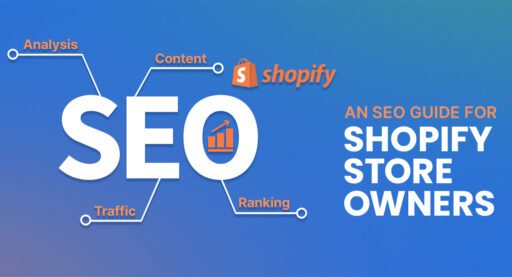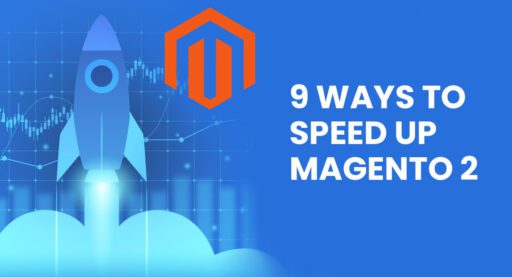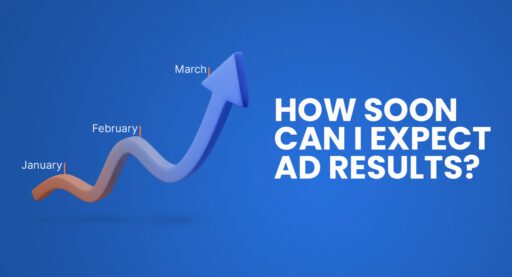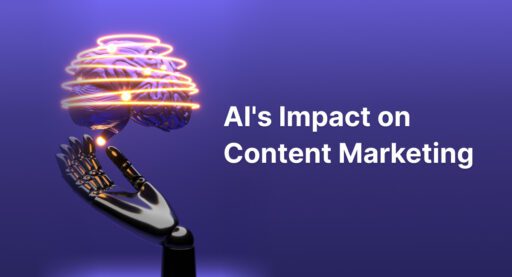When it comes to B2C marketing, many of us can relate to a buyer’s journey because most of us are buyers of consumable goods. However, most of us are not tasked with buying a software package for our employer that costs thousands of dollars. Understanding the nuances between B2C (Business-to-Consumer) and B2B (Business-to-Business) marketing is essential for crafting effective strategies. These two distinct approaches play a pivotal role in how companies engage with their target audiences and drive success. In this blog, we’ll delve into the fundamental disparities between B2C and B2B marketing, shedding light on the strategies, tactics and considerations that set them apart.
Purpose of B2B vs. B2C Marketing
Although there is some overlap between the two types of marketing, when you are marketing to a business, there are some important differences. Both involve selling products and services, but the difference resides in who you are selling to and the nature of the purchase cycle. B2C involves selling to the end user with a faster purchase cycle, whereas B2B involves either selling to a wholesaler or distributor, who in return sells to the end user – or selling to another business. Typically, the B2B purchase cycle takes months, if not years.
Your Audience – Finding the Decision Maker

When it comes to B2C marketing, the decision-maker is fairly obvious. It’s typically the head of household shopping that a consumer product marketer wants to influence. For B2B, it’s not so obvious because there could be many different decision-makers: the CEO, the president of a product group department or an employee tasked with finding solutions. Also, it’s important to recognize that it is likely a group decision being made in the context of B2B marketing. This will be key when looking at the marketing funnel and what message to focus on.
For B2C, we often segment by demographics, age, gender, interests and affinities. Yet for B2B, it’s more important to research the business size, how long the organization has been in business and whether they are a good fit for your business. When identifying a specific employee, consider that person’s department, seniority and title to better understand their level of influence. Also, do they belong to a professional group that would make them a good fit for your goods and services?
Motivation and Messaging
Whether you are marketing to a dad shopping for his daughter’s birthday gift or a CEO, messages with an emotional appeal, backed by facts, tend to resonate the most. We’d like to think the CEO is only interested in rational facts, but the truth of the matter is they are guided by their emotions just like the rest of us. When creating B2B messaging, consider how the decision maker you are targeting is going to benefit from your product or service. Can you make their job easier? Can you make them look smarter? Can you instill confidence in their decision?
Marketing Intelligence
Marketing intelligence is about understanding your website’s user-behavior analytics. Because B2B marketing is more of a one-to-one endeavor, knowing the individual you are targeting and how they are interacting with your website and ads is critical for both B2B and B2C strategies. However, as B2B is typically a smaller audience that makes a sizeable investment, the stakes are higher. Therefore, it’s important to make a good first impression on your B2B audience across all marketing touchpoints. For this reason, it’s essential to ensure all communications across the path-to-purchase are synching together. Make certain your ad platforms, website, and email marketing activity are visually consistent, as well as ensure that the systems are feeding into one another and being closely monitored.
Conversion Tracking
Before starting a marketing campaign, establish and quantify your conversion goal. A B2B conversion goal could be a lead-form fill, whereas a B2C conversion goal could be a purchase on an eCommerce site. It’s best to assign a value to the conversion and to know what a profitable return on investment is. A B2C purchase on a website is the dollar value of the purchase. But what is the B2B value of a lead form fill? This will vary based on the margin per sale, but also on the value of a long-time client and their potential to provide you with future revenue streams.
Make sure that you can accurately monitor paths to conversion and that you accurately attribute conversions to their source. The more granularly you can determine where and how a client converted, the more effectively you can focus on what platforms and ad messages to invest your time and money into.
The Marketing Funnel
As with B2C, the marketing funnel guides B2B marketing. However, the platforms recommended and the goals at each stage are somewhat different for B2B.
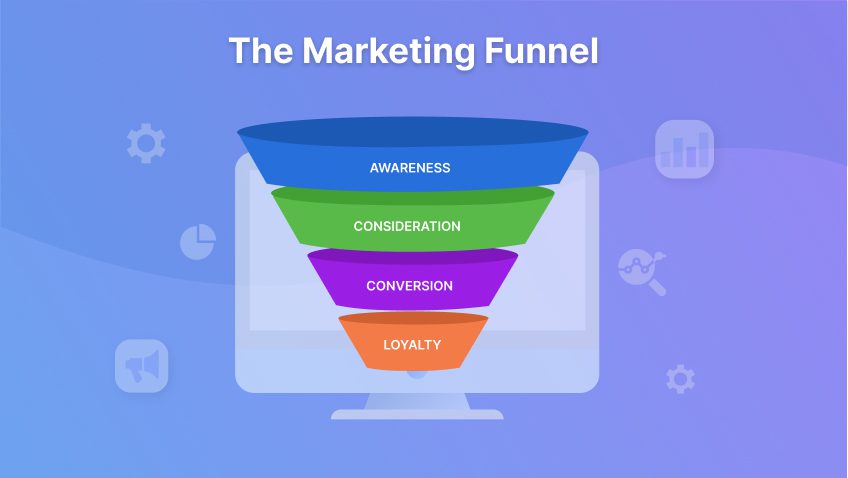
The Awareness Phase
Having familiarity and building demand are just as important for business marketing as for consumer marketing. Oftentimes, products like office goods or packaging materials can be promoted based on cost and convenience. Other entities, like services or larger and more complex products, require multiple points of contact. It is likely that a B2B decision-maker has been tasked with finding the best possible solution for their company and is more likely to consider a vendor with which they have familiarity. For this reason, the Awareness Phase should be the priority in your marketing strategy.
When targeting B2B decision-makers, audience segmentation is the most important consideration. Focus on platforms that allow you to do this. For example, a YouTube advertising campaign could focus on different channels that your prospects may be using. Prospects showing interest in professional fields on Facebook or in their Google search history can also be targeted with awareness ads. LinkedIn is often a top pick for targeting specific departments and titles.
Awareness-driven ads should focus on creating familiarity with your brand logo and communicating high-order benefits that will motivate a decision-maker to want to learn more and move into the consideration phase.
The Consideration Phase
The goal in this phase is to be present and ready with answers when a prospect is conducting research. A B2B prospect tends to stay in this phase much longer than a B2C prospect. Investing in heavy industrial equipment or long-term services requires much more research than deciding which pair of shoes or pet food to buy. Beyond making someone aware of your B2B business and its potential benefits, it’s crucial to stand out against competitors. Blogs and thought-leadership articles are useful resources to answer a B2B researcher’s questions in a way that showcases how your business is better and stands apart from the crowd.
Consideration ads and content typically focus on quantifiable features and benefits, and as such, tend to be more long-form in format. Consideration ads can be boosted posts on LinkedIn that link to website articles, blogs or even gated content like white papers that can be downloaded by submitting contact information. Your goal in this phase is to establish your business as an expert and to drive qualified traffic to your site, adding potential leads to your remarketing list.
Some examples of B2B content used to drive consideration include:
- Case Studies
- White Papers
- Blog Posts or Articles
- FAQs
The Conversion Phase
The advertising goal in this phase is to motivate your prospect to take action. The action part of the funnel differs depending on the specific product or service. For example, Google shopping ads for a B2C eCommerce site can be retargeted to site visitors. For high-touch B2B businesses, such as consulting services, the goal may be to set up a meeting with a salesperson. With this type of campaign, a phone call or contact information should be the default conversion, and this can also be done with Google Ads, LinkedIn, Facebook or a similar platform.
To drive B2B action, you can also offer free audits, discounts, estimates and consultations.
Loyalty and Retention Phase
Taking steps to engender loyalty is important, as the customer continues to generate value after the initial sale, whether it’s referral business or more sales in the future. Using email marketing to stay in touch and drive future sales is critical. Similarly, generating reviews and referrals from a satisfied customer sends positive signals to other potential buyers. Make it easy to review your business and consider offering incentives or discounts to maintain a positive relationship.
Quality customer support and quick responses are possibly even more crucial in a B2B campaign, as time is always a tight commodity for a business decision-maker.
Brand Messaging Guide: A Must-Do for B2C and B2B Marketing
As we’ve outlined, there are some critical marketing differences between B2B and B2C. Yet, regardless of whether you are responsible for B2B or B2C marketing, the roadmap to success is contingent on having a foundational Brand Messaging Guide rooted in a clear articulation of your brand’s value proposition. This guide should demonstrate how your brand uniquely addresses your client’s pain points.
Consistently communicating your brand’s value proposition and exceeding a client’s expectations will build trust, which is the ultimate goal. This has lasting value well beyond immediate sales, as trust is what ensures longevity.
At Epic, we’re experienced in building both B2C and B2B marketing funnels customized to meet your particular business needs and objectives.
